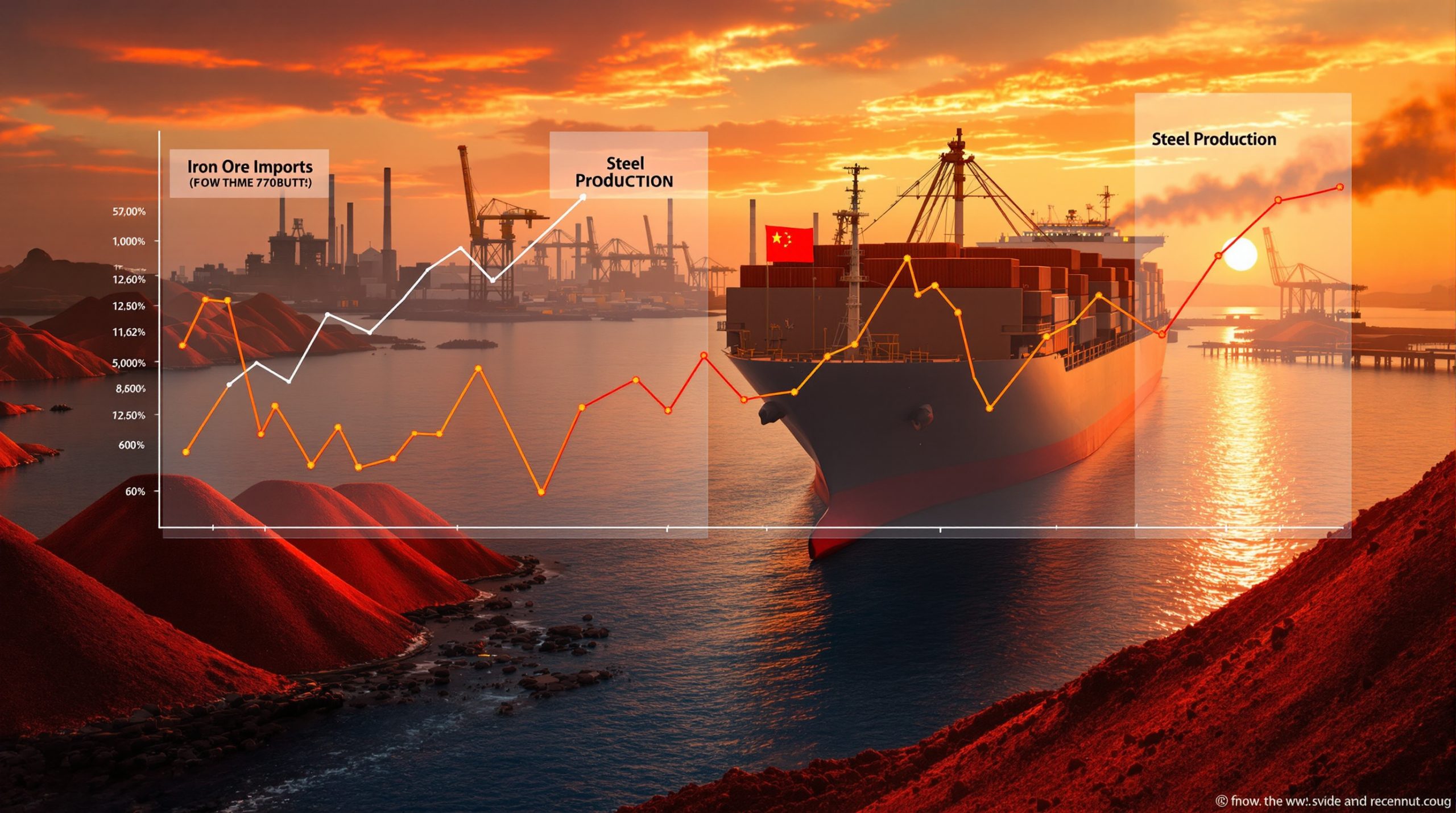Understanding Crude Oil Prices Today: Market Dynamics and Trends
The global crude oil market is navigating a complex landscape marked by geopolitical tensions, strategic production adjustments by OPEC+, and divergent regional price movements. As of May 2025, WTI crude trades at $57.16 per barrel (0.05% increase), while Brent crude has declined 1.73% to $60.23. Financial institutions like Morgan Stanley and Goldman Sachs have revised forecasts downward, reflecting concerns over oversupply and demand uncertainty. Meanwhile, major producers like Saudi Arabia and Russia are adapting to price pressures through pricing strategies and fiscal adjustments, while U.S. shale production faces sustainability debates amid evolving understanding market dynamics.
Current Price Movements and Market Sentiment
Divergence Between WTI and Brent Benchmarks
The widening spread between WTI ($57.16) and Brent ($60.23) highlights regional supply-demand imbalances. While WTI remains stable due to robust U.S. refining activity, Brent's sharper decline reflects weaker European and Asian demand. The OPEC Basket's 7.10% drop to $61.80 further underscores these disparities, driven by the cartel's decision to accelerate output cuts.
This price divergence serves as a key indicator for traders assessing regional market strengths and weaknesses. The stability of North American benchmarks compared to their international counterparts suggests domestic consumption remains resilient despite global headwinds.
Technical Indicators and Investor Sentiment
Analysts note critical support levels at $54.77 for WTI Cushing and $59.96 for Murban crude. A break below these thresholds could trigger algorithmic selling, while stabilization may signal a market bottom. The 20% surge in U.S. LNG exports to Europe ($3.573/MMBtu) has partially offset crude volatility, though S&P's downgrade of Woodside's Louisiana LNG project highlights sectoral risks.
Market sentiment indicators show hedge funds reducing long positions by 14% over the past month, suggesting growing bearishness among institutional investors. This contrasts with retail trader positioning, which remains cautiously optimistic according to global commodities insights and brokerage platform data.
Geopolitical Tensions and Supply Concerns
U.S.-Russia Energy Diplomacy
The Trump administration has leveraged lower prices as a negotiation tool, stating that "low oil prices put the U.S. in a favorable position against Russia." This strategy complicates Moscow's fiscal planning, given Russia's 24% reduction in energy revenue forecasts. Concurrently, the EU faces legal hurdles in restricting Russian gas imports, maintaining dependency despite geopolitical tensions.
The geopolitical chess game extends beyond direct U.S.-Russia relations, as secondary sanctions continue to reshape global trade flows. Russian crude increasingly flows to Asian markets at discounted rates, creating ripple effects through global pricing mechanisms. These shifts require careful consideration of geopolitical investment strategies by market participants.
Middle Eastern Strategic Shifts
Saudi Arabia's dual strategy—raising official selling prices (OSPs) to Asia while signaling potential output increases—has created market confusion. The kingdom's pricing power is being tested by India's resistance to long-term supply commitments for proposed joint refineries. Meanwhile, the IMF has revised Middle Eastern growth forecasts downward by 2.3 percentage points, reflecting diminished oil receipts.
"The era of OPEC price control is ending as market fragmentation increases," notes one senior energy analyst. "We're witnessing a fundamental restructuring of global energy trade patterns."
Saudi Arabia's sovereign wealth fund continues diversifying away from petroleum dependence, investing $7.5 billion in renewable energy projects during Q1 2025 alone—signaling the kingdom's recognition of long-term petroleum market challenges.
OPEC+ Production Decisions
Accelerated Output Increases
OPEC+'s unexpected decision to phase out 1.2 million bpd cuts by Q3 2025 represents a strategic pivot. This move aims to reclaim market share but risks exacerbating oversupply, particularly with U.S. production peaking sooner than anticipated. The cartel's compliance rate dropped to 85% in April 2025, with Iraq and Nigeria exceeding quotas.
The decision signals a fundamental shift in OPEC strategy from price defense to market share protection. Internal documents suggest the alliance recognizes the diminishing returns of production restraint in a market increasingly influenced by non-OPEC sources.
Shale Production Economics
Despite Permian Basin growth fueling ExxonMobil's Q1 success, breakeven prices above $60/bbl raise sustainability concerns. Marathon Petroleum's recent $9.1 billion acquisition of Parkland Refining underscores industry efforts to secure downstream margins amid upstream volatility.
The geological reality of shale wells—with their steep decline curves and diminishing returns in secondary drilling locations—is creating natural production constraints independent of price signals. Recent data shows first-year production decline rates approaching 65% for new Permian wells, compared to 45% five years ago.
Financial Institutions' Response to Market Changes
Revised Price Forecasts
Morgan Stanley cut its Brent forecast to $62.50 (-8%), while Goldman Sachs reduced its target by 12%, citing inventory builds and electric vehicle adoption rates. These revisions contrast with Chevron's maintained dividend policy, supported by refining margins hitting $22.50/bbl.
The divergence between financial analysts' bearish outlook and energy majors' dividend confidence highlights the industry's bifurcated view on recovery timelines. Companies with integrated operations appear better positioned to weather continued price pressure.
Investment Implications
Energy majors are prioritizing shareholder returns, with Shell continuing $4 billion buybacks and Repsol affirming its 5% dividend yield despite profit declines. The sector's average free cash flow yield of 9.4% remains attractive, though debt/EBITDA ratios above 3× signal financial stress.
Institutional investors have shifted allocation strategies, reducing direct exposure to producers while increasing positions in midstream assets with long-term contracts. This rotation reflects preference for stable cash flows over price-dependent production economics.
| Company | Dividend Yield | Cash Flow/Debt | Breakeven Price |
|---|---|---|---|
| ExxonMobil | 4.2% | 0.39 | $38/bbl |
| Shell | 3.8% | 0.45 | $42/bbl |
| Chevron | 4.5% | 0.51 | $40/bbl |
| BP | 5.1% | 0.32 | $46/bbl |
| Total | 5.3% | 0.37 | $45/bbl |
Global Oil Production Outlook
U.S. Production Trends
EIA data shows U.S. output stabilizing at 12.8 million bpd, with Permian growth offsetting Bakken declines. However, drill rig counts have fallen 15% YoY, suggesting future supply constraints.
The plateauing of U.S. production challenges the narrative of unlimited shale growth. Productivity gains from longer laterals and enhanced completions appear to be reaching technological limits, with per-well returns declining despite efficiency improvements. Furthermore, Trump's energy policies could significantly impact future production trajectories.
Russian Fiscal Adjustments
Moscow's revised 2025 budget assumes $58/bbl Brent, down from $76, necessitating $40 billion in spending cuts. Rosneft's pivot to rupee-denominated sales to India highlights diversification efforts amidst sanctions.
Russian producers have demonstrated unexpected resilience in maintaining output despite technology restrictions. Indigenous drilling technology development has partially offset Western equipment embargoes, though at higher cost and reduced efficiency.
Regional Market Performance
North American Differentials
Western Canadian Select's discount widened to $11.22/bbl versus WTI due to pipeline constraints. Louisiana Light's premium ($61.92) reflects strong Gulf Coast refining demand.
The regional price differentials highlight the critical importance of transportation infrastructure in North American markets. Despite political promises, cross-border pipeline capacity remains insufficient to normalize Canadian heavy crude pricing.
Asian Demand Dynamics
China's crude imports fell 4.2% MoM in April 2025, while India's strategic reserves reached 90% capacity, dampening near-term demand.
Chinese refining capacity utilization dropped to 76% in Q1 2025—a five-year low reflecting both maintenance schedules and economic headwinds. However, independent "teapot" refineries continue to opportunistically purchase discounted cargoes, creating unpredictable demand surges. Recent China's economic stimulus impact on energy markets remains a critical factor to monitor.
Investor Considerations
Technical Support Levels
Critical thresholds include $54.50 for WTI and $59.00 for Brent. A close below these levels could trigger $5-7/bbl downside.
Technical analysis suggests crude oil prices today are testing key moving averages that have historically provided support. The 200-day moving average at $63.40 for Brent represents a critical resistance level that price action has failed to breach in recent weeks.
Regulatory Risks
The Trump administration's legal challenges to state climate laws may delay refinery upgrades, potentially widening light-heavy crude spreads.
Environmental regulatory uncertainty has reduced capital expenditure planning horizons from typical 10-year frameworks to 3-5 year windows. This shortened investment cycle creates additional volatility as producers hesitate to commit to long-term projects.
Adaptation Strategies Across Producing Regions
Middle Eastern Economic Diversification
Saudi Arabia's $200 billion Neom project advances despite oil revenue declines, while Qatar secures a 25-year LNG supply deal with Japan.
The acceleration of economic diversification programs across Gulf states represents perhaps the clearest signal of long-term crude price concerns among traditional producers. Saudi Arabia's Vision 2030 implementation has reached 47% completion according to government officials, with particular focus on tourism and technology sectors.
Emerging Producers' Hedging
Guyana's proposed oil revenue stabilization fund, endorsed by former Finance Minister Ashni Singh, aims to mitigate price volatility.
Newer oil-producing nations are implementing sophisticated financial hedging programs earlier in their development cycles than historical precedent. Guyana's approach—combining physical hedging with sovereign wealth investment—represents a model increasingly adopted by emerging producers.
Natural Gas and LNG Market Developments
Price Trends
Henry Hub futures hold at $3.57/MMBtu, supported by European storage levels 18% below 5-year averages.
The natural gas market demonstrates remarkably different fundamentals from crude oil, with structural supply limitations supporting prices. The concentration of U.S. production in associated gas regions creates supply inelasticity that maintains price floors despite variable demand.
Project Financing Challenges
S&P's negative outlook for Woodside reflects concerns over Louisiana LNG's $12 billion capital requirements.
The financing environment for major LNG projects has deteriorated as banks implement stricter climate-related lending criteria. Projects now require 40% equity participation compared to 25% in previous investment cycles, significantly impacting development economics.
FAQs on Current Oil Markets
Why are crude oil prices today falling despite geopolitical risks?
A: OPEC+ oversupply (1.4 million bpd surplus) and weakening Chinese demand growth (3.1% YoY) outweigh conflict premiums.
How do prices compare historically?
A: Current Brent ($60.23) is 22% below the 5-year average but 48% above April 2020 lows.
What impact will lower oil prices have on renewable energy development?
A: Contrary to conventional wisdom, falling crude prices have minimal direct impact on renewable economics, which compete primarily with natural gas and coal in electricity markets rather than petroleum.
How are oil-dependent economies responding to price declines?
A: Beyond fiscal adjustments, oil-dependent nations are accelerating sovereign wealth fund diversification, with average international financial asset allocation increasing from 62% to 71% since 2022.
Conclusion: Navigating Market Volatility
The crude oil market's current phase reflects a structural shift rather than cyclical fluctuation. Producers must balance short-term revenue needs against energy transition pressures, while investors require granular analysis of regional differentials and refining margins. With OPEC+ losing pricing power and U.S. shale entering maturity, the next 12 months will likely see increased M&A activity and portfolio optimization across the sector.
While crude oil prices today reflect immediate supply-demand imbalances, longer-term market indicators suggest a rebalancing by late 2025, though likely at lower equilibrium levels than previous cycles. Successful market participants will be those who can navigate both near-term volatility and long-term transition challenges.
Disclaimer: This analysis contains forward-looking statements about oil prices and market conditions. These predictions involve inherent risks and uncertainties, and actual outcomes may differ materially from those anticipated. Readers should consult financial advisors before making investment decisions based on this information.
Want to Identify the Next Major Mineral Discovery Before the Market?
Discovery Alert's proprietary Discovery IQ model delivers instant notifications on significant ASX mineral discoveries, turning complex data into actionable investment opportunities. Explore how major discoveries have historically generated substantial returns by visiting the dedicated discoveries page and gain your market-leading advantage today.




